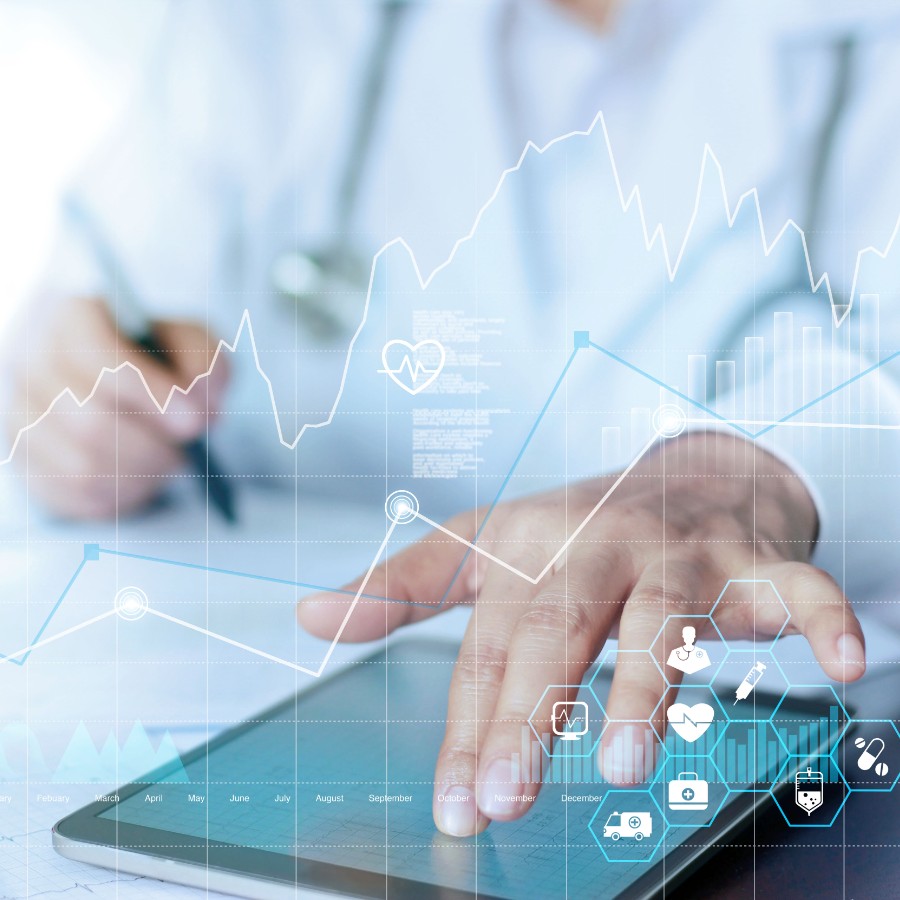The proliferation of IoT technologies has enabled predictive analytics to develop in myriad different ways, because connected sensors can collect huge volumes of data which was previously to costly or complex to gather. In the healthcare sector, there are huge opportunities for predictive analytics both with newly-generated IoT data, and more traditional sources of health data such as patients’ vital signs and outcomes. It is perhaps unsurprising, then, that a report by the Society of Actuaries in 2017 reported that 93% of health organisations thought predictive analytics was important to the future of their business, whilst 89% were other currently using predictive analytics or planning to do so in the next five years.
So what are some of the ways in which predictive analytics is impacting healthcare worldwide? Here are just a selection.
Analysing patient data
One of the ‘simplest’ forms of predictive analytics in healthcare – in terms of the basic mechanism at the core of the process, if not actually undertaking it – is using machine learning algorithms and artificial intelligence to analyse patient data en masse.
Such data could pertain, for example, to patients’ progress with a particular condition, or how they respond to a particular drug or intervention. Over time, at scale and when analysed in conjunction with other information such as pre-existing conditions and lifestyle factors, such information can be incredibly insightful. It can help researchers and healthcare practitioners better predict outcomes, enabling them to better tailor care – and better manage patient expectations. And it can help proactively identify those patients who might benefit best from a more unusual approach.
Managing hospital readmissions
Readmissions following a patient’s discharge after hospital treatments can be particularly dangerous, and in many contexts they are a critical factor in how healthcare organisations are assessed and ranked.
Predictive analytics can help healthcare organisations understand which patient profiles are more likely to require readmissions, following the model outlined above. If patients are sent home with connected healthcare devices monitoring particular vital signs, then this form of predictive analytics becomes even more proactive, working in real-time to identify when a patient might be deteriorating to a degree that they might require readmission.
Appointment no-shows
A study by Duke University found that electronic health record (EHR) data could be used to accurately predict which patients are most likely to fail to show up for appointments. With healthcare services under huge pressure to ‘do more with less’ and encourage patients to use services in a responsible way, these insights could be invaluable. They enable proactive targeting of particular patients to try and avoid no-shows in the future.
Physical assets
Just as in industrial and manufacturing contexts, healthcare organisations can benefit from predictive analytics to better manage their most sophisticated and costly physical assets. High-tech equipment such as scanners, when fitted with sensors to monitor key information, can be proactively identified for maintenance and repair before small issues escalate. This prolongs the useful life of key equipment and improves the organisation’s bottom line.
There are myriad different applications of predictive analytics in the healthcare sector. This is just a selection of the ways in which big data combined with sophisticated machine learning algorithms is ushering in an era in which we really can predict the future.

